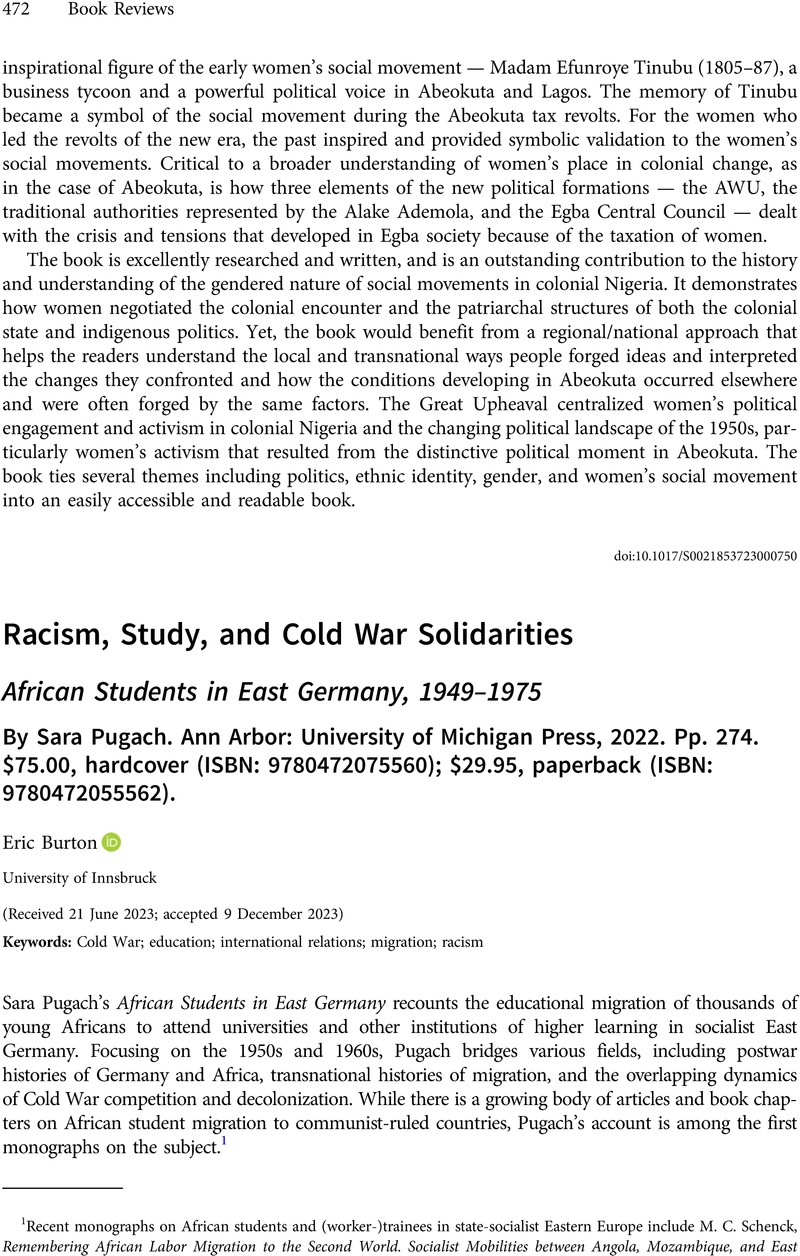No CrossRef data available.
Published online by Cambridge University Press: 22 January 2024

1 Recent monographs on African students and (worker-)trainees in state-socialist Eastern Europe include Schenck, M. C., Remembering African Labor Migration to the Second World. Socialist Mobilities between Angola, Mozambique, and East Germany (Cham, 2023)CrossRefGoogle Scholar; Otto, J., Fachkräfte für die Entwicklung. Fortbildungskooperationen zwischen Ghana und den beiden deutschen Staaten, 1956–1976 (Berlin, 2022)CrossRefGoogle Scholar; Schade, A., Das Exil von ANC-Mitgliedern in der DDR. Eine transnationale Verflechtungsgeschichte um Solidarität im Kalten Krieg (Berlin, 2022)Google Scholar; Boltovskaja, S., Bildungsmigranten aus dem subsaharischen Afrika in Moskau und St. Petersburg: Selbst- und Fremdbilder (Herbolzheim, 2014)CrossRefGoogle Scholar.